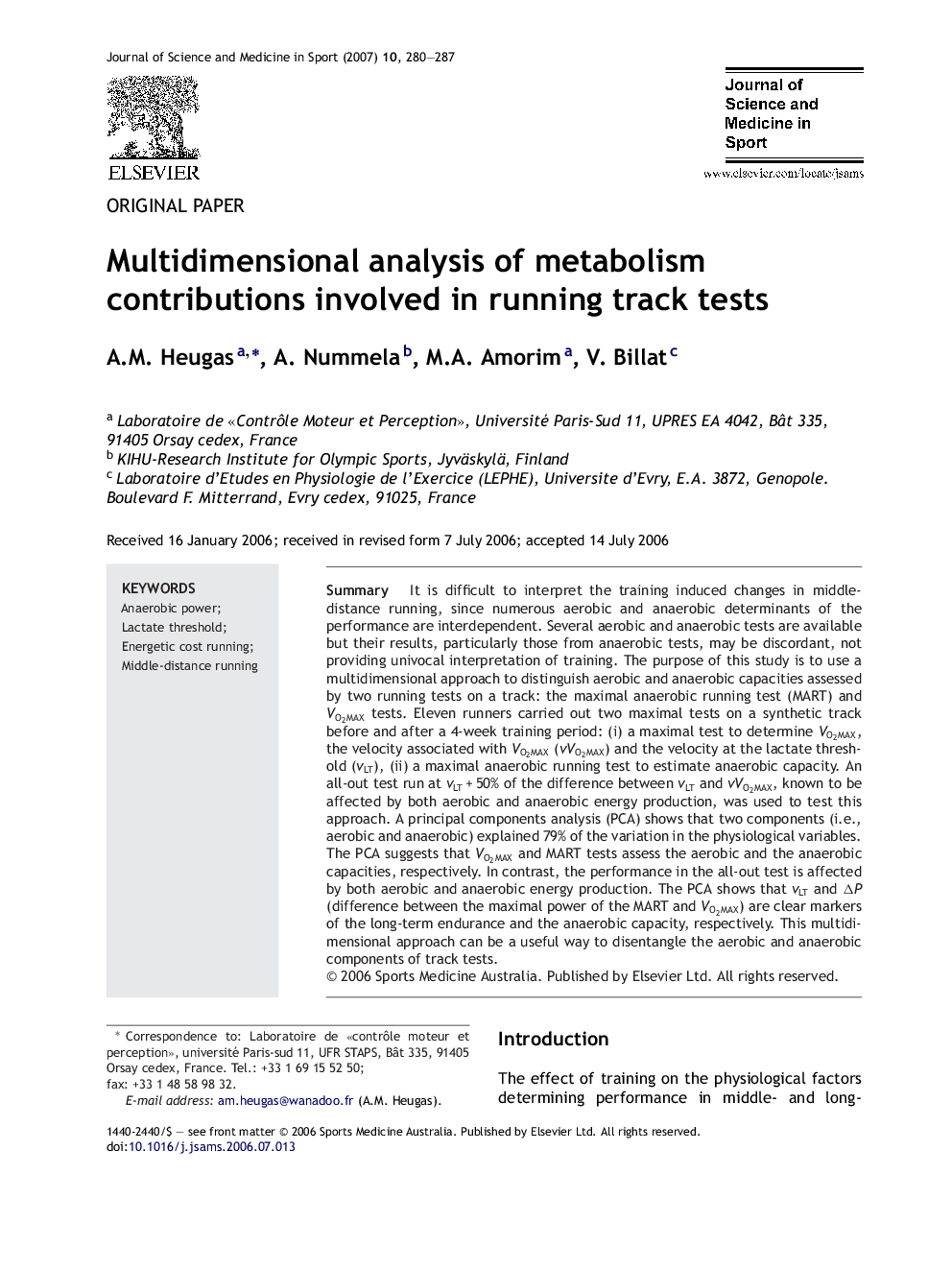| Article ID | Journal | Published Year | Pages | File Type |
|---|---|---|---|---|
| 2709005 | Journal of Science and Medicine in Sport | 2007 | 8 Pages |
SummaryIt is difficult to interpret the training induced changes in middle-distance running, since numerous aerobic and anaerobic determinants of the performance are interdependent. Several aerobic and anaerobic tests are available but their results, particularly those from anaerobic tests, may be discordant, not providing univocal interpretation of training. The purpose of this study is to use a multidimensional approach to distinguish aerobic and anaerobic capacities assessed by two running tests on a track: the maximal anaerobic running test (MART) and VO2MAXVO2MAX tests. Eleven runners carried out two maximal tests on a synthetic track before and after a 4-week training period: (i) a maximal test to determine VO2MAXVO2MAX, the velocity associated with VO2MAXVO2MAX (vVO2MAXvVO2MAX) and the velocity at the lactate threshold (vLTvLT), (ii) a maximal anaerobic running test to estimate anaerobic capacity. An all-out test run at vLTvLT + 50% of the difference between vLTvLT and vVO2MAXvVO2MAX, known to be affected by both aerobic and anaerobic energy production, was used to test this approach. A principal components analysis (PCA) shows that two components (i.e., aerobic and anaerobic) explained 79% of the variation in the physiological variables. The PCA suggests that VO2MAXVO2MAX and MART tests assess the aerobic and the anaerobic capacities, respectively. In contrast, the performance in the all-out test is affected by both aerobic and anaerobic energy production. The PCA shows that vLTvLT and ΔP (difference between the maximal power of the MART and VO2MAXVO2MAX) are clear markers of the long-term endurance and the anaerobic capacity, respectively. This multidimensional approach can be a useful way to disentangle the aerobic and anaerobic components of track tests.
